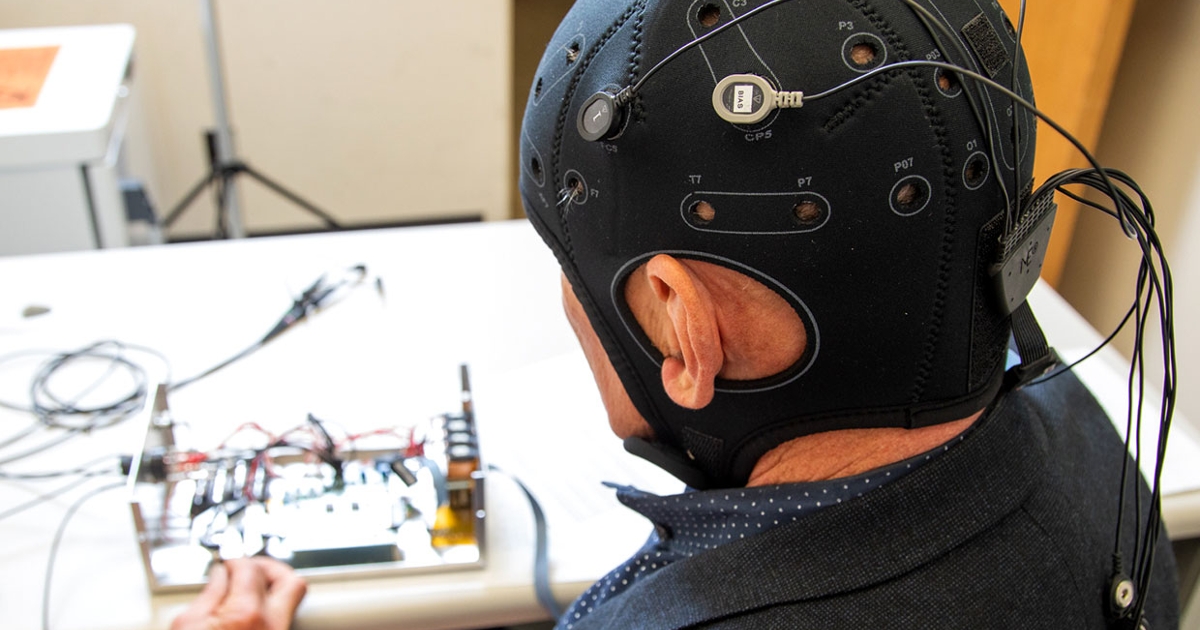
If an electric current passes through the brain, does anyone hear it?
Earlier this year, researchers in the United Kingdom showed that stimulating the brain with mild direct currents helped people stop stuttering. Neurostimulation has also shown promise for treating conditions such as migraines, depression, and the physical effects of stroke.
Yet even the small electrical currents sent through the brain in such experiments—say a couple milliamps of either direct or alternating current—are roughly one million times as strong as the brain’s neural response, which is around 10 microvolts. Which means measuring brain activity during neurostimulation is like trying to record the sound of a mouse squeaking as a lawn mower passes by.
